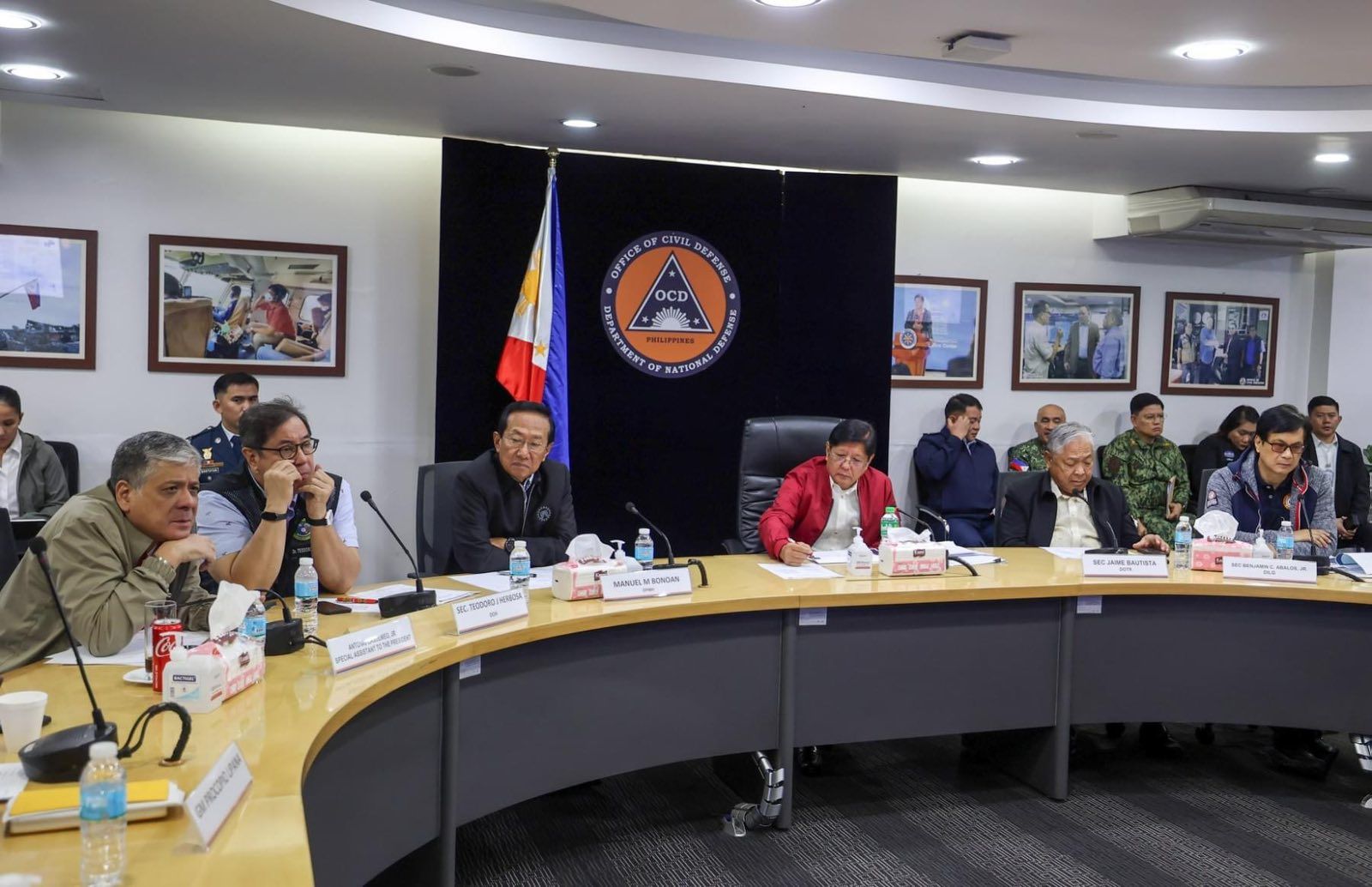Why PBBM has yet to declare a nationwide state of calamity due to 'Carina'
The Metro Manila Council (MMC) has officially declared a state of calamity in the National Capital Region (NCR), but questions remain on why the national government couldn’t unilaterally put the region under a state of calamity.
 President Ferdinand 'Bongbong' Marcos Jr. presides over the situation briefing on the effects of Typhoon Carina and the enhanced southwest monsoon at the NDRRMC headquarters in Camp Aguinaldo, Quezon City on Wednesday, July 24, 2024. (KJ Rosales/PPA Pool)
President Ferdinand 'Bongbong' Marcos Jr. presides over the situation briefing on the effects of Typhoon Carina and the enhanced southwest monsoon at the NDRRMC headquarters in Camp Aguinaldo, Quezon City on Wednesday, July 24, 2024. (KJ Rosales/PPA Pool)
The President gave an explanation of the process during a media interview after a situation briefing at the National Disaster Risk Reduction and Management Council (NDRRMC) headquarters in Camp Aguinaldo, Quezon City on Wednesday, July 24.
Marcos said that “usually,” a state of calamity declaration is decided upon by LGU executives.
“It’s up to the local communities to decide because they know best, they know best what they need,” Marcos explained. “It is up to them. That is very much a local prerogative.”
“It is also 'yung pag-deklara ng (The declaration of a) State of Calamity, it's also to access funds para makapag-access na sila ng funds kasi nauubos na 'yung kanilang emergency na reserved, kukuha sila sa national (because their emergency reserve has been depleted, they’ll need to get from national). So, that's what we're working on now,” he added.
The President furthered that the national government would be involved in the declaration only if three regions were affected.
“That’s the national calamity already. Wala na kaming choice dun, pasok na ang national (We don’t have a choice there, the national must step in),” he said.
On Wednesday, the MMC made the decision following a meeting presided by Interior and Local Government Secretary Benhur Abalos who recommended the declaration of a state of calamity in the NCR.
During the meeting, MMC president and San Juan City Mayor Francis Zamora moved to declare the state of calamity in the region after 12 of its 17 mayors voted in favor of it.
A state of calamity is declared depending on the number of deaths or casualties, the extent of destruction to properties and infrastructure, disruption of businesses and livelihood, and the inability of people to continue with their normal way of life.
The Philippine Atmospheric, Geophysical and Astronomical Services Administration (PAGASA) said that Carina continues to intensify on Wednesday and may reach super typhoon status before making landfall in Taiwan.
Moderate to intense rains in the western portion of Luzon are expected until Friday, July 26, while flooding is currently being experienced all throughout Metro Manila and the neighboring provinces of Calabarzon.